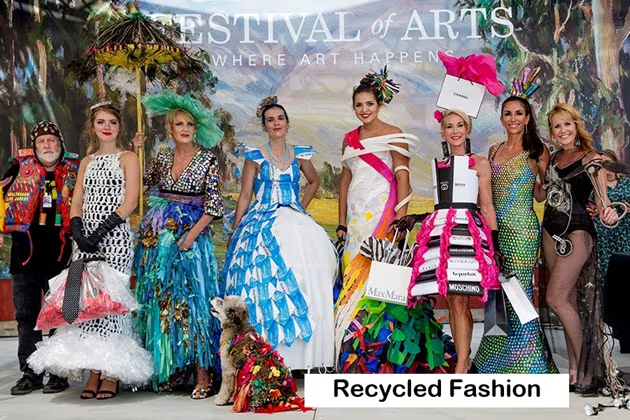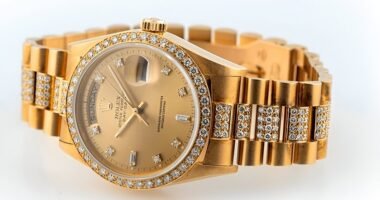In modern-day years, recycled fashion has emerged as a key style in sustainable fashion. With environmental issues growing and the style enterprise below scrutiny for waste and pollutants, consumers are increasingly turning to green apparel options. Recycled fashion no longer simplest helps reduce waste but also promotes creativity, strong point, and a greener fabric cupboard. In this text, we find out the concept, blessings, and sensible tips for embracing recycled style.
What is Recycled Fashion?
Recycled style refers to clothing, accessories, or textiles that are repurposed, upcycled, or made from pre-gift substances in place of the usage of recent resources. This can embody:
- Clothing crafted from recycled material (like polyester from plastic bottles)
- Upcycled clothes converted from antique clothes
- Second-hand and vintage gadgets reimagined for current-day placed on
The middle concept in the back of recycled style is to decrease environmental impact with the aid of reducing the want for raw fabric production, water utilization, and textile waste in landfills.
The Rise of Recycled Fashion
The style industry is one in every of the most important individuals to environmental pollutants, producing thousands and thousands of waste annually. Consumers and architects are without a doubt knowing the significance of sustainable practices. Recycled style has won momentum due to:
- Increased consciousness of weather exchange
- Innovations in fabric recycling technology
- Growth of moral and eco-conscious producers
- Social media have an effect on showcasing upcycled and vintage style developments
Benefits of Recycled Fashion
Embracing recycled fashion comes with more than one benefits:
1. Environmental Sustainability
Using recycled substances reduces waste, lowers carbon emissions, and conserves natural assets. For example, developing material from recycled plastics consumes much less energy than producing new synthetic textiles.
2. Unique Style Statements
Recycled fashion regularly entails upcycling or innovative redesigns, resulting in precise quantities you obtained’t discover in heavily produced stores. Wearing recycled clothing makes a non-public style declaration and facilitates individuality.
3. Cost-Effective Options
Second-hand or upcycled clothing is often more cheap than brand-new gadgets, making sustainable style available for all people.
4. Support for Ethical Brands
Many manufacturers that specialize in recycled fashion adhere to straightforward labour practices, which means your wardrobe selections also can assist moral paintings environments.
5. Contribution to Circular Economy
Recycled style promotes a round financial system wherein substances are reused, decreasing the stress in the world’s resources and fostering long-term sustainability.
Types of Recycled Fashion
There are several instructions of recycled style, each with its specific blessings:
1. Upcycled Clothing
Upcycling entails transforming antique or discarded clothes into new, fashionable garments. Examples include turning antique jeans into jackets or using cloth scraps to create patchwork designs.
2. Recycled Fabric Clothing
Clothing crafted from recycled material, together with polyester from plastic bottles or recycled cotton, enables to lessen the demand for virgin substances and minimizes waste.
3. Second-Hand and Vintage Fashion
Thrifted or antique garb is a practical manner to engage in recycled fashion. These pieces are pre-cherished and regularly have a timeless attraction.
4. Eco-Friendly Accessories
Recycled style isn’t confined to apparel. Bags, footwear, and jewelry crafted from recycled substances are gaining popularity among environmentally conscious customers.
How to Incorporate Recycled Fashion in Your Wardrobe
Embracing recycled style is less complicated than you would possibly assume. Here are a few pointers:
- Start Small: Begin with accessories like bags, belts, or hats made from recycled substances.
- Thrift Shopping: Visit close by thrift shops or on line systems for 2d-hand clothing.
- DIY Upcycling: Repurpose antique clothes into new designs, including slicing, dyeing, or patchwork.
- Research Ethical Brands: Look for producers committed to recycled style and transparency in sourcing.
- Mix and Match: Pair recycled style devices with everyday apparel to create a balanced and stylish look.
Top Brands Leading the Recycled Fashion Movement
Several producers have pioneered recycled fashion, making it elegant and mainstream:
| Brand | Specialty | Notable Practices |
|---|---|---|
| Patagonia | Outdoor and casual wear | Recycled polyester, fair labour practices |
| H&M Conscious | Fast fashion sustainable line | Clothing made from recycled fabrics |
| Stella McCartney | Luxury sustainable fashion | Upcycled and eco-friendly materials |
| Allbirds | Footwear | Shoes made from recycled plastics and wool |
| Eileen Fisher | Women’s fashion | Clothes recycling program & sustainable fabrics |
Supporting those manufacturers guarantees that your material cupboard alternatives definitely contribute to the environment.
Styling Tips for Recycled Fashion
Recycled style can be both green and modern-day. Here are some styling tips:
- Layering: Combine recycled jackets or cardigans with contemporary basics.
- Statement Pieces: Let upcycled or vintage garments serve as focal points of your outfit.
- Accessorise: Use recycled luggage, belts, and footwear to add a sustainable touch.
- Mix Textures: Combine recycled fabric with other substances for a unique, fashionable appearance.
- Colour Coordination: Upcycled pieces regularly function in innovative colour patterns—encompass them!
Challenges in Recycled Fashion
While recycled fashion is developing rapidly, it faces some stressful situations:
- Limited Availability: Not all manufacturers provide recycled clothing, limiting patron alternatives.
- Consumer Awareness: Many people are ignorant of the manner to find out and select recycled fashion.
- Pricing: Some recycled garments, especially designer portions, can be expensive.
- Quality Concerns: Certain upcycled devices may additionally vary in quality because of repurposed materials.
Despite the demanding situations, increasing calls for attention are the use of innovation in recycled fashion.
Future of Recycled Fashion
The future of style lies in sustainability. Experts expect:
- Wider adoption of recycled cloth by mainstream manufacturers
- Advanced recycling technology is making production more efficient
- Integration of virtual systems for reselling and swapping garments
- Increased collaboration among designers and environmental groups
Recycled style is not a niche—it’s turning into the identical old for accountable fashion.
FAQs About Recycled Fashion
Q.1. What is recycled style?
Recycled fashion refers to apparel or accessories made from pre-consumer waste or repurposed clothes, decreasing environmental impact.
Q.2. How can I begin wearing recycled style?
Begin with the resource of buying at thrift stores, buying upcycled gadgets, or deciding on manufacturers that use recycled materials.
Q.3. Is recycled apparel more highly priced?
It varies—second-hand and upcycled devices may be low-priced, even as designer recycled style can be pricier.
Q.4. Are recycled fashion merchandise durable?
Yes, many recycled objects are made with superb materials and craftsmanship, making them durable.
Q.5. Which brands specialize in recycled fashion?
Brands like Patagonia, H&M Conscious, Stella McCartney, and Allbirds are leaders in recycled style.
Conclusion
Recycled fashion is more than a fashion; it’s a movement closer to sustainable residing and responsible consumerism. From upcycled clothes to garb crafted from recycled fabric, the options are numerous and elegant. By embracing recycled fashion, you not only contribute to environmental conservation, however also make a unique fashion statement. Start small, explore manufacturers, and incorporate recycled quantities into your clothing cabinet—your picks may want to make a huge difference for the planet.
Read More:-







